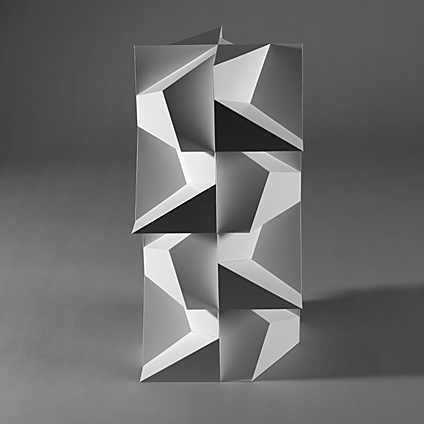The transmutation of an individual cube can end in a huge number of different forms. Arranged in progressive order, the individual partial steps form a transmutation chain.
In this chain, all five platonic solids can be found:
Tetrahedron (three sided pyramid)
Hexahedron (cube, six sides)
Octahedron (eight sides)
Dodecahedron (twelve sides)
Icosahedron (20 sides)
If you reassemble these geometric splinters, the original cube is reconstructed.

Series, includes four variations
A cube surrounds a dodecahedron geometrically perfect and you call this property polar to each other. If the cube is divided by three edge-symmetrical axes, the result is eight cubes with equal volume.
 Kubus und Dodekaeder I
Kubus und Dodekaeder I
 Kubus und Dodekaeder III
Kubus und Dodekaeder III
 Kubus und Dodekaeder II
Kubus und Dodekaeder II
 Kubus und Dodekaeder IV
Kubus und Dodekaeder IV
The icosahedron is like the dodecahedron polar to the cube. A geometric division by edge-symmetrical axes of the cube cuts also the icosahedron into eight units with equal volume.
When you disassemble a cube, both a three-sided and a four-sided pyramid is the exact result.
An attractive major project may arise from the idea of a thematically connected further transmutation of both different pyramids. Then, it involves the double transmutation of the original cube.



